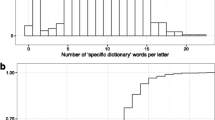Abstract.
Speech recognition is an important technology that is becoming increasingly effective for dictation-oriented activities. While recognition accuracy has increased dramatically in recent years, recent studies confirm that traditional computer users are still faster using a keyboard and mouse and spend more time correcting errors than dictating. Further, as these users become more experienced they frequently adopt multimodal strategies that require the keyboard and mouse when correcting errors. While speech recognition can be a convenient alternative for traditional computer users, it can be a powerful tool for individuals with physical disabilities that limit their ability to use a keyboard and mouse. However, research into the performance, satisfaction, and usage patterns of individuals with physical disabilities has not been reported. In this article, we report on a study that provides initial insights into the efficacy of existing speech recognition systems with respect to individuals with physical disabilities. Our results confirm that productivity does not differ between traditional users and those with physical disabilities. In contrast, numerous differences were observed when users rated their satisfaction with the system and when usage patterns were analyzed.
Access this article
We’re sorry, something doesn't seem to be working properly.
Please try refreshing the page. If that doesn't work, please contact support so we can address the problem.
Similar content being viewed by others
Author information
Authors and Affiliations
Additional information
Published online: 18 May 2001
Rights and permissions
About this article
Cite this article
Sears, A., Karat, CM., Oseitutu, K. et al. Productivity, satisfaction, and interaction strategies of individuals with spinal cord injuries and traditional users interacting with speech recognition software. UAIS 1, 4–15 (2001). https://doi.org/10.1007/s102090100001
Issue Date:
DOI: https://doi.org/10.1007/s102090100001




